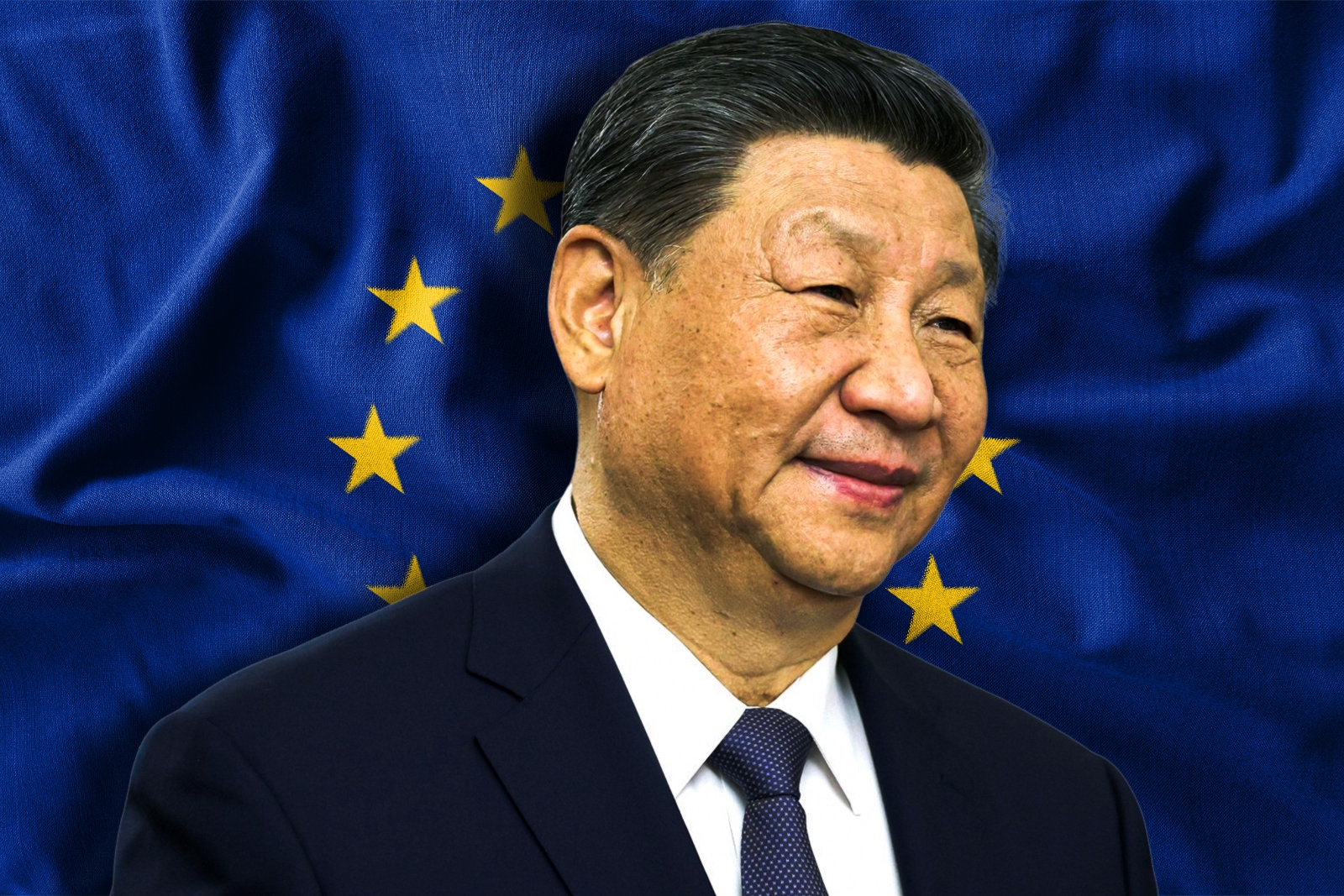
A Frosty Anniversary: Can Europe and China Rekindle Trust at 50?
On July 24, Beijing played host to the 25th EU-China summit—a gathering that marked not only a key diplomatic event but also the 50th anniversary of formal relations between the European Union and the People’s Republic of China.
The summit, led by Chinese President Xi Jinping and Premier Li Qiang, welcomed top European officials, including European Council President António Costa and European Commission President Ursula von der Leyen. Yet despite the ceremonial overture, the mood was anything but celebratory.
The backdrop was stark: a world roiled by the war in Ukraine, the reorientation of American foreign policy, and widespread economic volatility. In this climate of global disruption, expectations for the summit were modest. Analysts described the tone as “frosty,” with little hope for meaningful breakthroughs. So why convene at all? Despite hardened positions and deep divisions, both sides recognize the stakes of a deteriorating relationship.
At its core, the EU-China partnership is one of the world’s most consequential. In 2024, bilateral trade in goods and services exceeded €845 billion, with the EU exporting €213.2 billion to China while importing €519 billion—revealing a pronounced and persistent imbalance. Over the past decade, however, what was once a relationship of promise has veered into turbulence.
Geopolitical tensions and economic grievances have undermined trust. The EU has shifted from courting engagement to pursuing “de-risking,” a strategy aimed not at decoupling, but at reducing dependence on Chinese supply chains and technology. This approach reflects deep anxieties over strategic vulnerabilities and the fragility of interdependence.
From Beijing’s vantage, however, the European recalibration is seen less as prudence and more as alignment with Washington’s containment efforts. With the transatlantic consensus on China showing signs of fray, Xi Jinping has urged the EU to make “the right strategic choice”—one that sidesteps confrontation and seeks cooperative engagement instead.
The summit’s agenda reflected this uneasy duality: shared global challenges set against entrenched divides. Discussions included trade, climate change, and global governance—but simmering beneath the surface was a series of structural disputes that have come to define the relationship.
Foremost is trade. The EU’s vast and growing trade deficit with China is fueled by longstanding complaints: state subsidies, industrial overcapacity, coerced technology transfers, and currency manipulation. In response, Brussels has slapped provisional tariffs of up to 37.6% on Chinese electric vehicles, citing unfair competition driven by state support. China has hit back, launching anti-dumping investigations targeting EU pork, brandy, and medical equipment.
Since 2020, China has opened seven formal trade investigations against the EU; the bloc has countered with eleven of its own. Many of these cases have escalated under the influence of U.S. policy shifts, creating a feedback loop of retaliation.
Then there’s the looming specter of rare earths. These minerals—vital for green technologies and advanced manufacturing—have become flashpoints. With China controlling the lion’s share of global supply, its export controls have alarmed EU policymakers, who accuse Beijing of weaponizing trade to exert geopolitical leverage. The result: a scramble in Brussels to secure alternative sources and insulate key sectors, particularly renewable energy and electric vehicles, from future disruptions.
The second major source of tension is geopolitical: the war in Ukraine. The EU views Beijing’s posture toward Russia as a litmus test of good faith. Brussels insists China must do more to pressure Moscow, especially by halting the export of dual-use goods that could support Russia’s war machine. Yet China frames the conflict as a European problem—distant from its core interests—and is reluctant to jeopardize its strategic partnership with Russia. The impasse has hardened, with the EU viewing China’s stance not as neutrality but as tacit complicity.
Compounding these tensions is the human rights issue—a perennial source of friction. The EU has voiced “deep concerns” over conditions in Xinjiang and Tibet, including allegations of forced labor and abuses against ethnic minorities. China has rejected these claims as interference in its domestic affairs. But the damage to public opinion and political will within Europe is real and lasting.
Moreover, Beijing’s outreach to individual EU member states—especially those like Hungary that often buck Brussels—has been interpreted as an effort to fracture EU unity. The divide-and-conquer perception erodes trust at a time when cohesion is already fragile.
Broader disputes over Taiwan, the South China Sea, and China’s growing military footprint linger in the background. They aren’t focal points of this summit, but they color the overall mood and further complicate any move toward rapprochement.
Meanwhile, external pressures exacerbate the divide. Washington’s evolving China strategy continues to cast a long shadow over EU deliberations. And China’s push for greater influence in European politics and infrastructure—often through economic incentives and strategic partnerships—has stoked fears of asymmetric influence and loss of sovereignty.
Still, despite the frost, diplomats on both sides are signaling the need for dialogue over disengagement. While sweeping agreements are unlikely, small steps may help defuse some of the tension.
On trade, both parties might aim for a more equitable playing field through reciprocal market access. The EU is pushing for reliable export licenses for rare earths and more predictable regulatory treatment for European firms. China, for its part, wants EV tariffs lifted and has shown renewed interest in reviving the stalled Comprehensive Agreement on Investment (CAI), which could streamline market access and codify investment protections.
Small gestures—streamlining export approvals, tweaking enforcement on industrial subsidies—could emerge as face-saving compromises. But analysts caution against expecting too much. Beijing must go beyond vague assurances of “win-win” outcomes, and Brussels must temper its hopes of reshaping China’s state-led economy.
Climate change, biodiversity, and the green transition offer potential common ground. Here, the interests of both powers align more closely. Joint projects, multilateral commitments, and cooperative innovation could help reframe the relationship from confrontation to coordination.
Even on Ukraine, marginal shifts could carry weight. A diplomatic signal from Beijing nudging Russia toward negotiations—even if indirect—might go far in Brussels, providing Xi with leverage while offering the EU a modicum of validation.
Continued high-level engagement also matters. The EU’s evolving de-risking strategy doesn’t preclude Chinese involvement—it simply aims to diversify exposure. Beijing, in turn, could help matters by restraining its more opportunistic bilateral overtures and embracing a more cohesive EU-China dialogue.
Ultimately, this summit is less about resolution and more about recognition: a mutual acknowledgment that a complete decoupling would be costly, chaotic, and self-defeating. That the two sides continue to talk, even as disputes multiply, is itself significant.
President Xi’s call for “proper handling of frictions” may be aspirational, but it gestures toward a shared interest in preventing the relationship from spiraling further. The summit, in marking a half-century of ties, also reveals just how fragile those ties have become.
In an increasingly multipolar world, both the EU and China have much to gain from cooperation—and much to lose from confrontation. Whether this anniversary becomes a pivot point or a missed opportunity will depend on their willingness to translate words into action, and to move beyond grievance toward a more durable, if uneasy, understanding.
